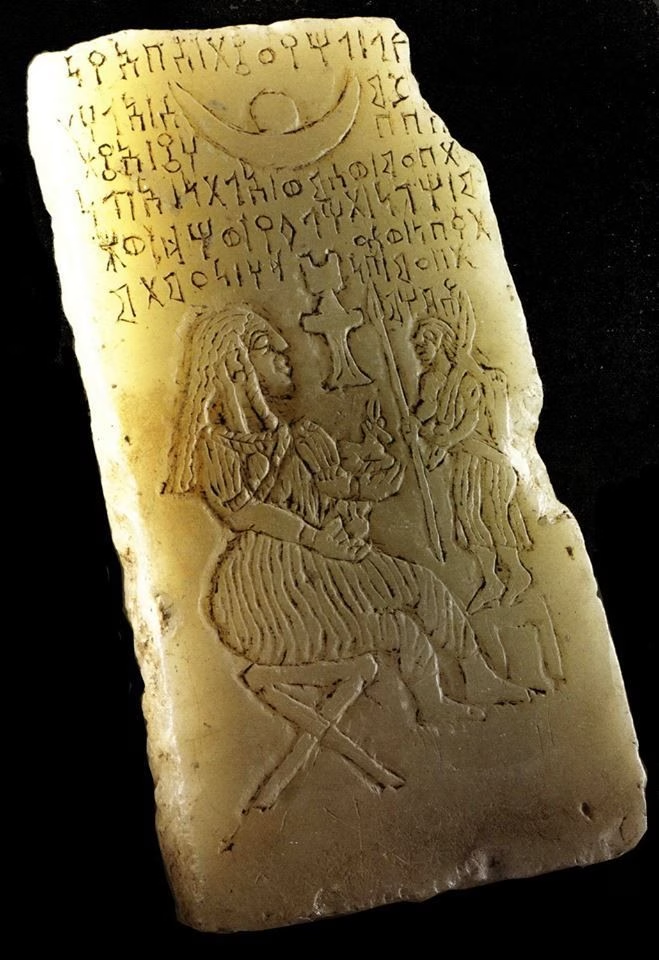This alabaster stela originates from the Tanim region of Yemen and dates back to the 1st century BCE. Measuring approximately 20.6 cm in height, 10.5 cm in width, and 4 cm in thickness, this small yet striking artifact depicts a ritual scene dedicated to the sun goddess Shams, an important deity in South Arabian religion.
Historical and Cultural Context:
Shams (also known as Shamsum or Dhat-Ba’ Dhanum) was regarded as the chief protective goddess of the Himyarite Kingdom. Her name means “The Radiant” or “Sun.” She was the southern Arabian counterpart to Nuha, the sun goddess of northern Arabia. In pre-Islamic Arabian religion, while local tribes and kingdoms had their own guardian deities, figures like Shams functioned as regional common gods.
Shams was part of a sacred triad in South Arabia, alongside Athtar—the god of the planet Venus—and Almaqah (or Syn in Hadhramaut), the moon god. This triad held a central role in the religious structure of ancient Yemen.

Artistic Features and Significance:
The relief on the stela depicts a hunter offering a sacrifice to the sun goddess Shams. This imagery reflects the religious rituals of the period and the relationship between the people and their divine figures. The use of alabaster highlights the diversity of materials and the craftsmanship present in Yemen’s ancient art.
Museum and Exhibition Information:
Today, the stela is part of the collection at the National Museum of Sanaa, Yemen (inventory number YM 386). It was also featured in the 2005 exhibition Caravan Kingdoms: Yemen and the Ancient Incense Trade held at the Arthur M. Sackler Gallery in Washington, D.C., gaining international recognition.
Conclusion:
This alabaster stela from Tanim provides a valuable example of South Arabian mythology and Himyarite religious practices. The depiction of an offering to the sun goddess Shams reveals the importance of religion in daily life and the devotion to sacred figures in ancient Yemeni society.





